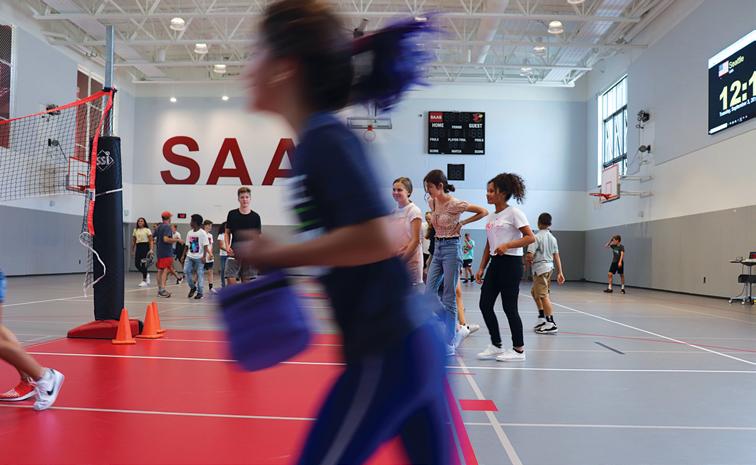
2 minute read
Counseling
A COUNSELOR′S APPROACH TO KNOW THE KID
Leigh Hopkins
Director of Counseling
Jonathon Friedman
Upper School Counselor
Jennifer Nelson
Middle School Counselor
The middle and high school years are filled with many “firsts” and transitions. It is at these pivotal moments when kids think about where they’ve been, where they come from, how they got there, and where they are going. As counselors, our role is to create and provide a space to support our students through these often seemingly insurmountable challenges, at a time in their development when they are still learning which tools and skills are needed to get them through. However, nothing we say or do will have much impact without the anchor of a solid relationship.
“Knowing the Kid” is at the core of our work as counselors. In order for us to most effectively support students, they need to feel that they can trust us and that we genuinely care about and understand them as unique individuals. Our role is different from other faculty in that we are not in the classroom each day or coaching students on a team, so we strive to find other ways to connect with students and see them for who they are.
So what does “Know the Kid” in terms of counseling look like, concretely? It looks like visits to the classroom, whether that’s presenting curriculum on resilience, healthy relationships, mental health and well-being, or facilitating a discussion where students work together to solve their own problems and empathize with and support one another. It looks like a ‘hello’ in the hallway and addressing students by their names. It looks like teachers, coordinators, coaches, and front desk staff connecting kids to us

when they notice that they are struggling or might need some support. It looks like parents reaching out when they are at a crossroads, feeling stuck, and looking for ways to help their kids. It looks like meeting with teachers, coordinators, and coaches to get a pulse on what’s happening with kids so we can understand the fuller picture. It looks like candy and snacks in our offices. It looks like joining parent coffees and education events to share ideas and better understand the needs and concerns of our SAAS families. It looks like joining students on grade-level retreats. It looks like learning over time what empathy and support look like to the kid sitting in front of us, right at that moment, and acknowledging that it might look completely different than it did for the kid we met with an hour earlier. It looks like celebrating over and over again the stress that was effectively managed, the paper that was completed, the social issue that was worked through, in a way that the kid sitting in front of us can hear it and believe that they themselves CAN work through these daunting “firsts,” challenges, and transitions.
The real metric isn’t whether or not we feel like we know the kid, it’s whether or not they feel like they are known. At times, that’s aspirational, but it’s an aspiration worth working toward, one interaction at a time. ☜










